All products featured are independently chosen by us. However, SoundGuys may receive a commission on orders placed through its retail links. See our ethics statement.
Harman Target, SoundGuys Preference Curve most preferred for in-ears
October 15, 2024
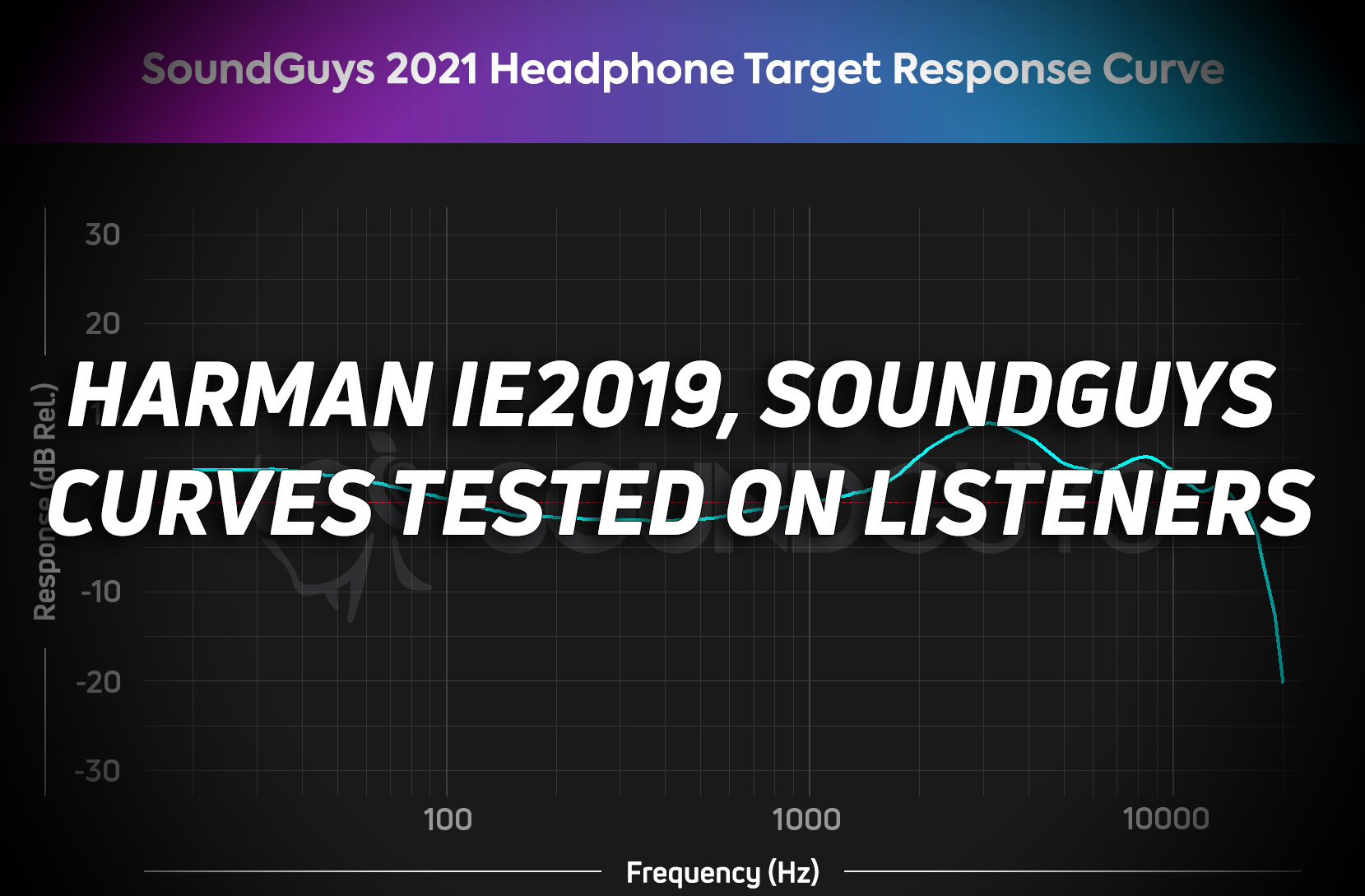
On October 8, 2024, Dr. Sean Olive presented research to the Audio Engineering Society’s annual show in New York City. Entitled “A comparison of in-ear headphone target curves for the Brüel & Kjær Head & Torso Simulator Type 5128,” the paper discusses challenges around the most popular headphone test fixture in the headphone review space, and explores five listener preference curves used to evaluate in-ear performance. This is the first published study investigating listener preferences for in-ears measured on the Bruel & Kjaer 5128 (referred to as the B&K 5128 from here on out). You can read the publication for free on the AES website.
This study is important because many leading publications in the headphone space have all moved to this new fixture over the last four years. Until this point, there were no independently validated public preference curves to assess in-ears on the B&K 5128. There is now research specific to this test fixture for both product categories. Interestingly enough, the Harman IE 2019 target was not the only preference curve at the top of the podium.
Disclosure: This news story discusses SoundGuys and its Headphone Preference Curve. This post intentionally avoids commentary. It may be updated to clarify or correct language.
- A B&K 5128-specific Harman IE 2019 Target was achieved.
- Dr. Sean Olive conducted controlled listening tests, exploring listener preferences of five different target curves for in-ears.
- Of the tested curves, the SoundGuys Headphone Preference Curve and Harman IE2019 were statistically tied for most preferred.
The study
Since many headphone reviewers and manufacturers have started to move to newer anthropomorphic testing heads, a number of problems need addressing. For example: Can targets developed on older systems be translated to the newer equipment (Type 4.3)? What would the Harman IE 2019 Target be on the B&K 5128? What preference curves would a sample of listeners prefer over others in blind, controlled conditions?
Dr. Olive’s study was very similar in some regards to the initial pilot study he shared at CanJam in April, with the exceptions of one fewer target, and a larger pool of listeners. Much of the study discussed here covers a similar territory as the new AES paper.
The candidates
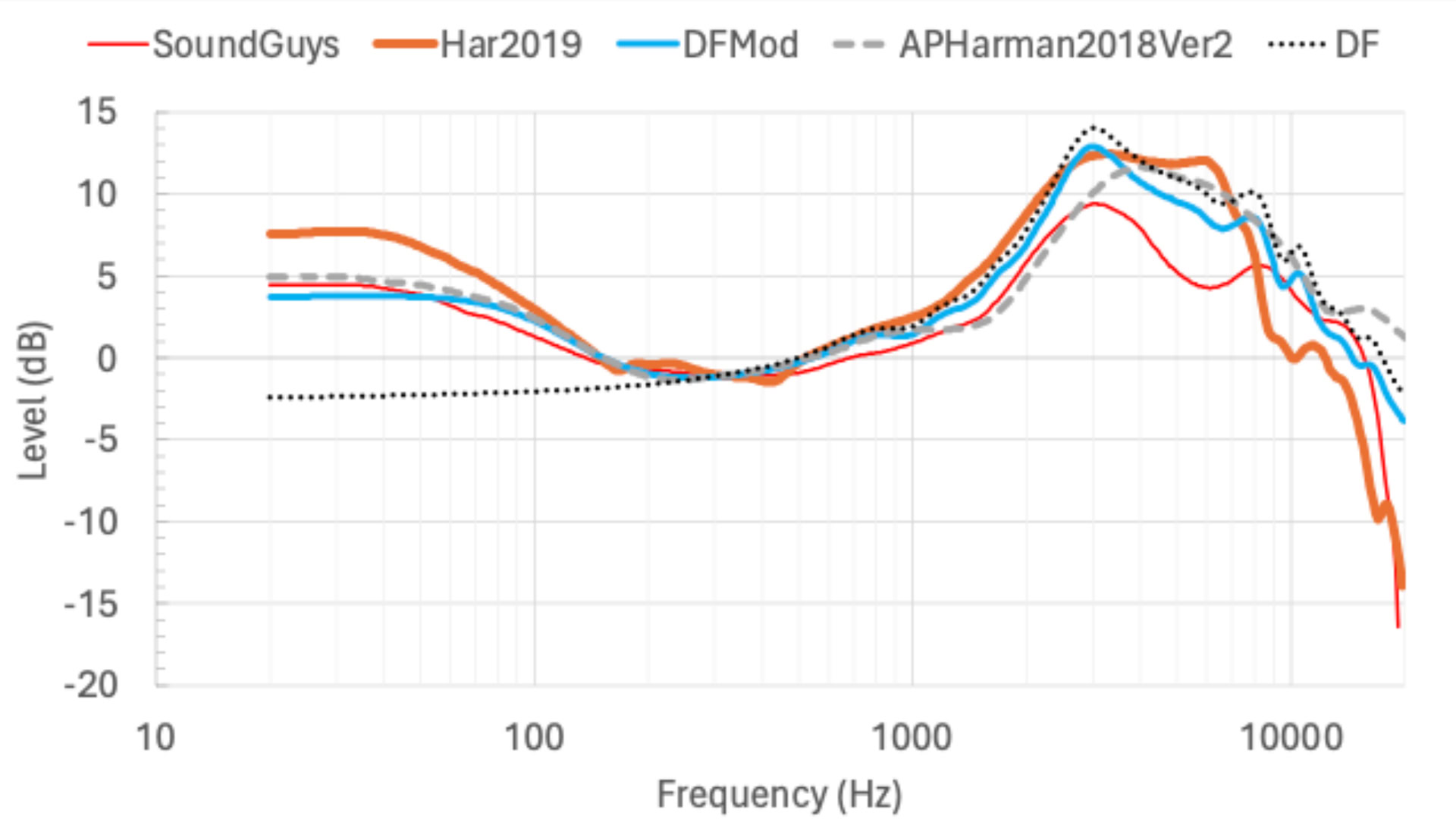
Five listener preference curves were tested in total:
- Har2019 is a version of the original Harman IE 2019 curve, translated for use on the B&K 5128. This is the curve currently used by Harman.
- SoundGuys is the SoundGuys Headphone Preference Curve.
- DFMod is the Diffuse Field, modified with a 6.4dB bass shelf and a -1.4dB high-shelf cut.
- APHarman2018v2 is the candidate curve posited by Senselab in its over-ear study.
- DF is the Diffuse Field of the test fixture.
These target curves offered a good cross-section of candidates for use with in-ears, though the unaltered Diffuse Field has posted poor results in every study so far for the test fixture used in this study. Examining different curves could also give insight into whether there are any particular features that are preferred more than others.
The test pool
In total, 32 test participants aged 21 to 50 years old were selected for this trial, all HARMAN International employees. The paper identified key characteristics of the pool of participants:
| Variable | Value | Count |
|---|---|---|
| Variable Sex | Value Male | Count 25 |
| Variable | Value Female | Count 7 |
| Variable Listening experience | Value Trained | Count 27 |
| Variable | Value Moderate | Count 4 |
| Variable | Value None | Count 1 |
| Variable Hearing loss (self-reported) | Value None | Count 28 |
| Variable | Value Mild | Count 4 |
The procedure
Once participants were selected, the team performed a Multiple Stimuli with Hidden Reference Anchor (MUSHRA) experiment using a custom app made for Mac computers. Then, three test tracks that the team felt were effective in determining in-ear performance were selected: “Bird on a Wire” by Jennifer Warnes, “Cousin Dupree” by Steely Dan, and “Gas Lighting Abbey” by Steely Dan. These tracks were reported to have proven their reliability in rating in previous tests.
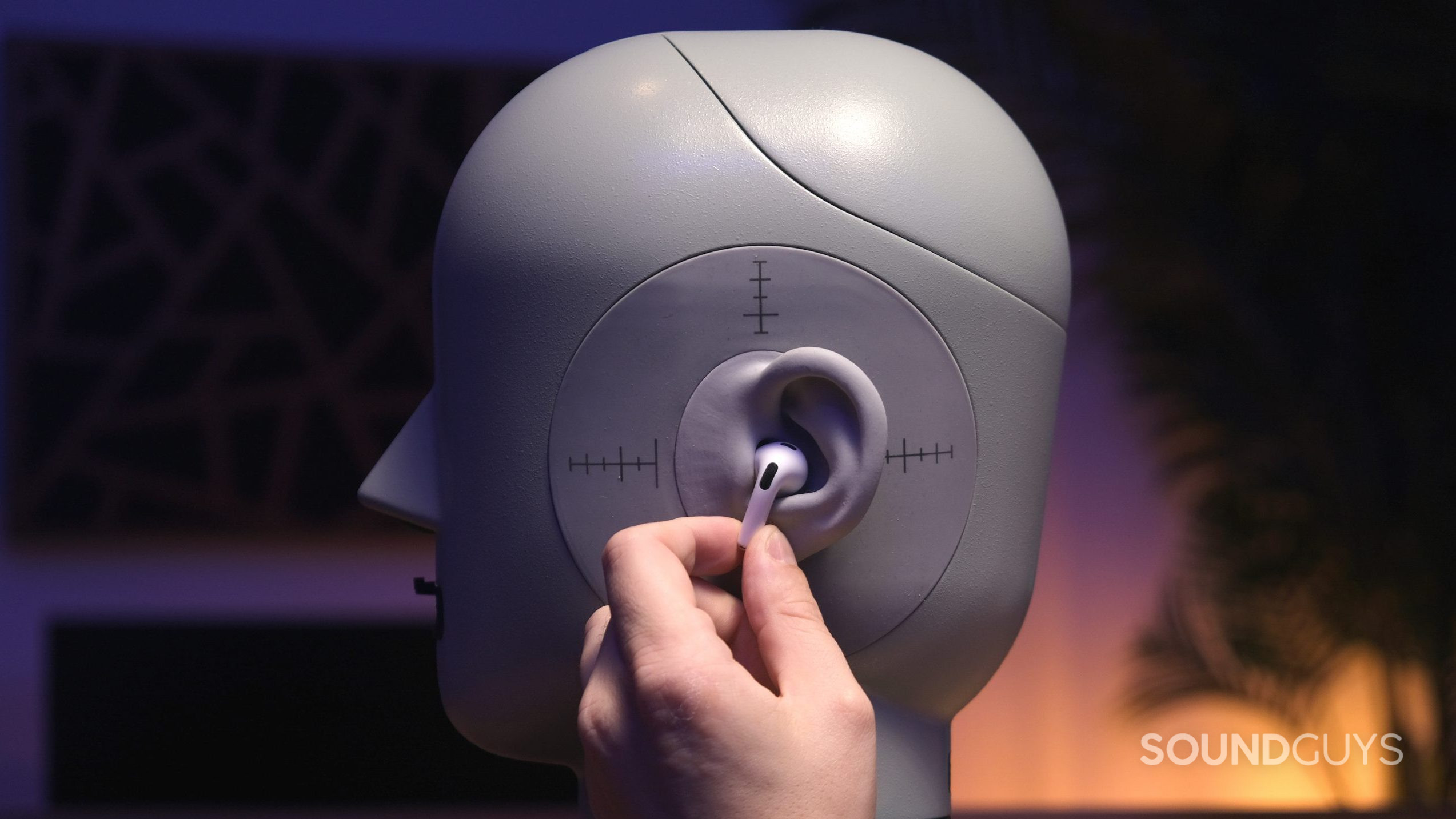
Using Sennheiser MOMENTUM in-ears modified with MEMS microphones to ensure proper fit, the 32 test participants listened to 20-second clips of the above test tracks in a randomized trial sequence, rating samples between 0 and 100. The scores were then tallied for each of the five preference curves studied.
What we learned
The conclusions of the study were summarized by Dr. Olive at the end of the paper.
In-ear targets made for Type 3.3 systems aren’t valid on Type 4.3 systems
The first finding was that target curves made for older equipment without the features of the newer heads are not transferrable to the new systems — the new systems are just too different. As Dr. Olive puts it, a “translation” will work if you re-measure a known pair of headphones or in-ears used to make the target curve on both systems. Multiple units aren’t used because the variance can be higher than expected.
The differences in measurements between test fixtures are broadband and vary from 10 dB in the bass to more than 30 dB at higher frequencies depending on the headphone model.” — Dr. Olive, A comparison of in-ear headphone target curves for the Brüel & Kjær Head & Torso Simulator Type 5128
This provides support for the idea that older systems behave differently than the newer ones. Those looking to update their target curves can’t simply tweak older ones and call it a day.
The Harman IE 2019 target now available for the B&K 5128
By using the above method, the Harman IE 2019 was able to be translated to the B&K 5128 test head, and then validated via a controlled listening test. Until this point, there was no validated version of the Harman IE Target for the newer type of test fixture shown to the public.
However, that is no longer the case. Headphone reviewers, manufacturers, and enthusiasts will now have this target to look to in addition to existing curves published for the B&K 5128.
Harman IE 2019 and the SoundGuys Headphone Preference Curve are more preferred than others
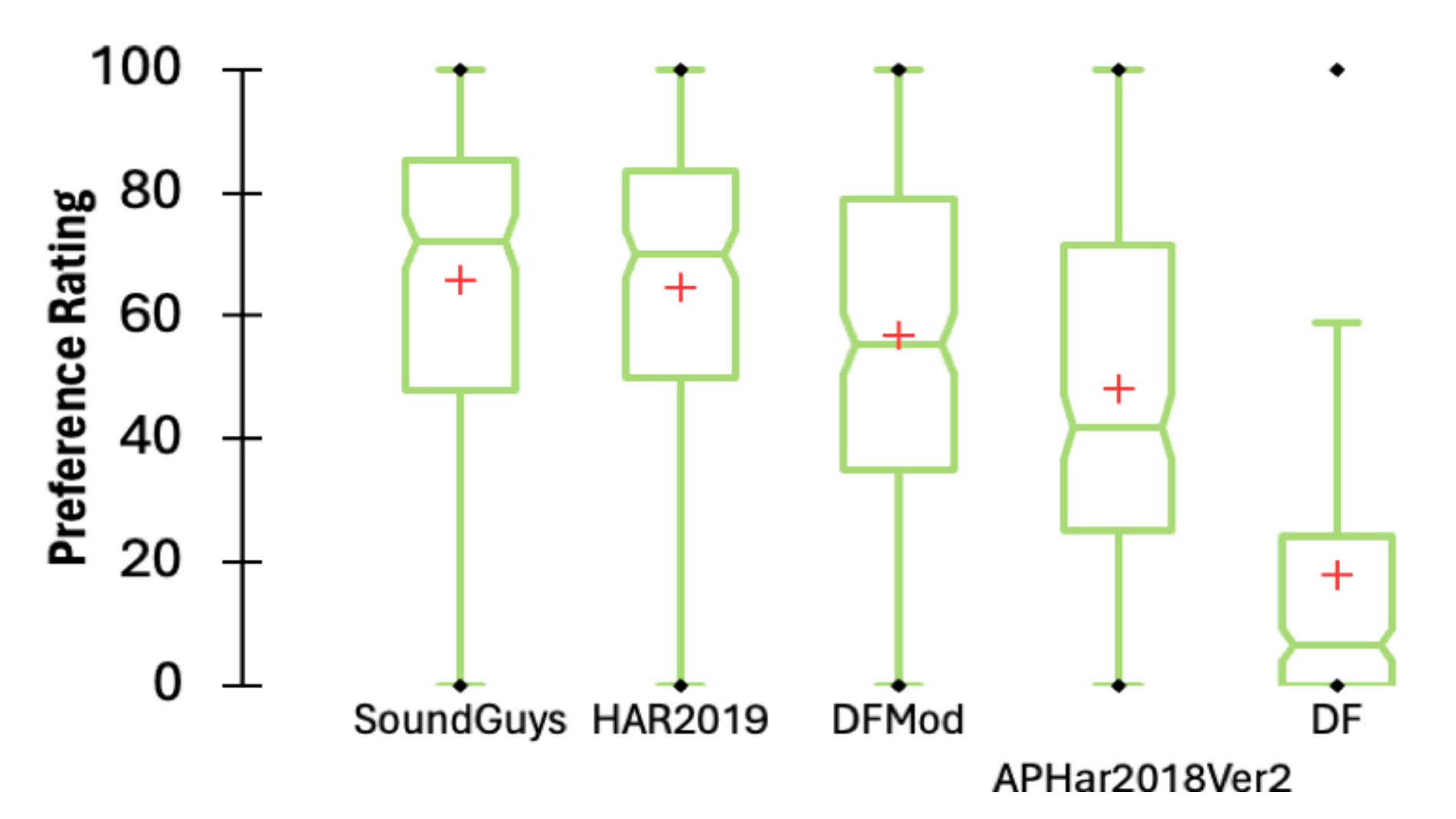
This study points to the Harman IE 2019 Target and the SoundGuys Headphone Preference Curve as solid predictors of listener preference for most when it comes to in-ears. Though the SoundGuys Headphone Preference Curve posted the highest mean preference rating, it did not set itself apart from the Harman IE 2019 Target in a statistically significant manner (a difference in rating of only 0.28/100). For all intents and purposes, both curves tied each other for the title of “highest-rated listener preference curve.”
The Har2019 or the SoundGuys target curves are good default choices since they were preferred by 72% of the listeners in this study.” — Dr. Olive
As the paper notes, trained listeners tend to like less bass and treble than untrained listeners do. It’s entirely possible that curves with more bass and treble like the Harman IE 2019 Target will be rated more highly by groups with a closer approximation of the general public.
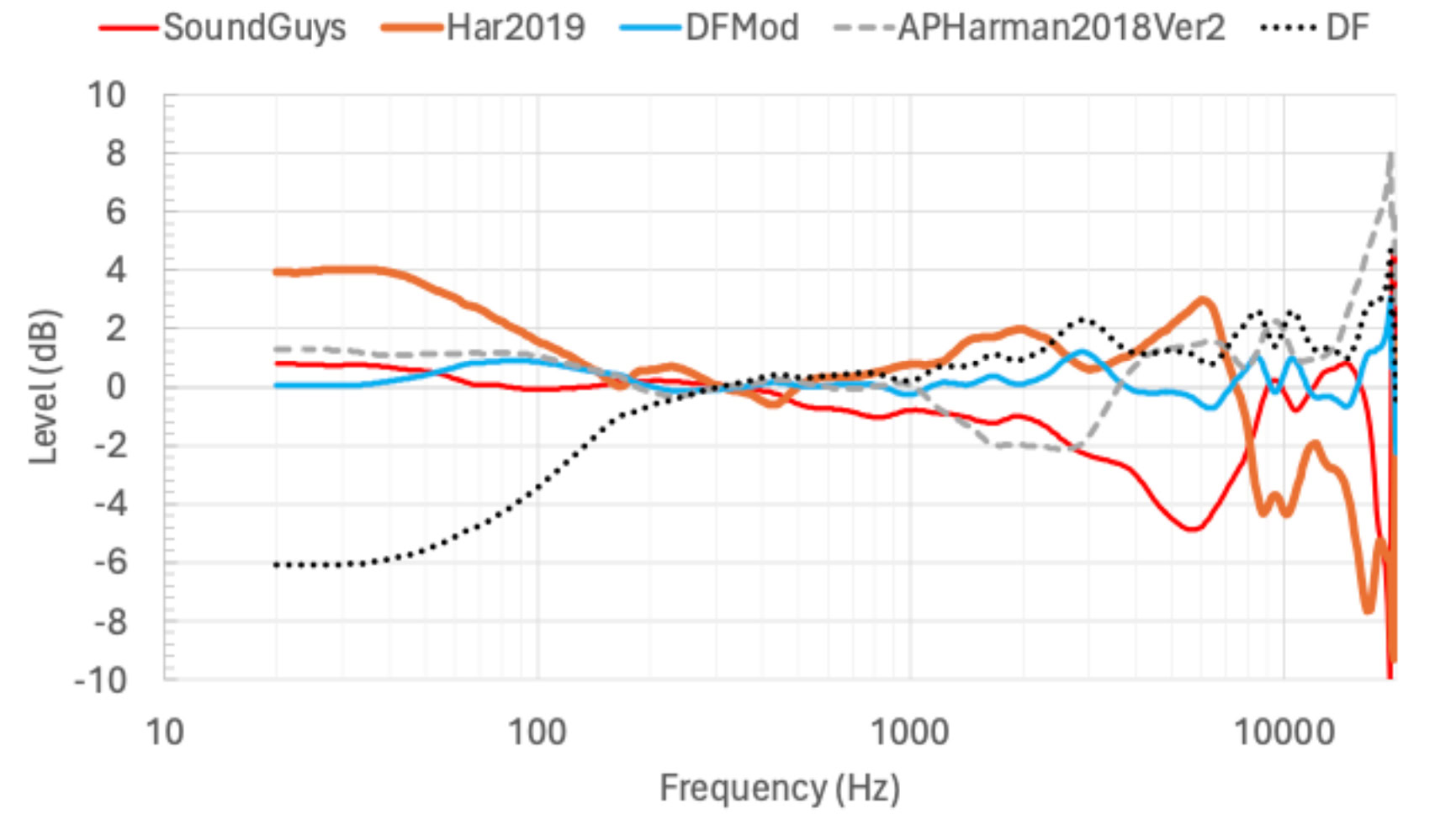
Given just how different the SoundGuys Headphone Preference Curve is to the Harman IE 2019 Target, it was unexpected how the same pool of listeners rated each curve similarly. Dr. Olive noted that it’s possible that a proportional relationship between bass and treble levels might be more important than absolute level, but that may need further study to confirm.
Two listener classes observed in results
Two classes of listeners were identified among the respondents. Class 1 listeners (72% of respondents) preferred the top two curves, while Class 2 listeners (28% of respondents) preferred curves with 2dB less bass and 1-2dB more treble (DFMod) and were ten years older on average. Age was identified as a predictive factor for class membership.
Interestingly, these results show that there is no single target curve for everyone, and that listeners sometimes prefer alternatives to the most-preferred curves. Though most respondents fell in Class 1 in this study, it’s entirely possible that you, personally, don’t.
What we didn’t learn
Covering topics like target curves, and especially the Harman Target, is fraught with opportunities for misunderstanding. According to Dr. Olive: “The Harman target is intended as a guideline and is not the last word on what makes a headphone sound good.” The same is true of the other curves in this and other listener preference studies.
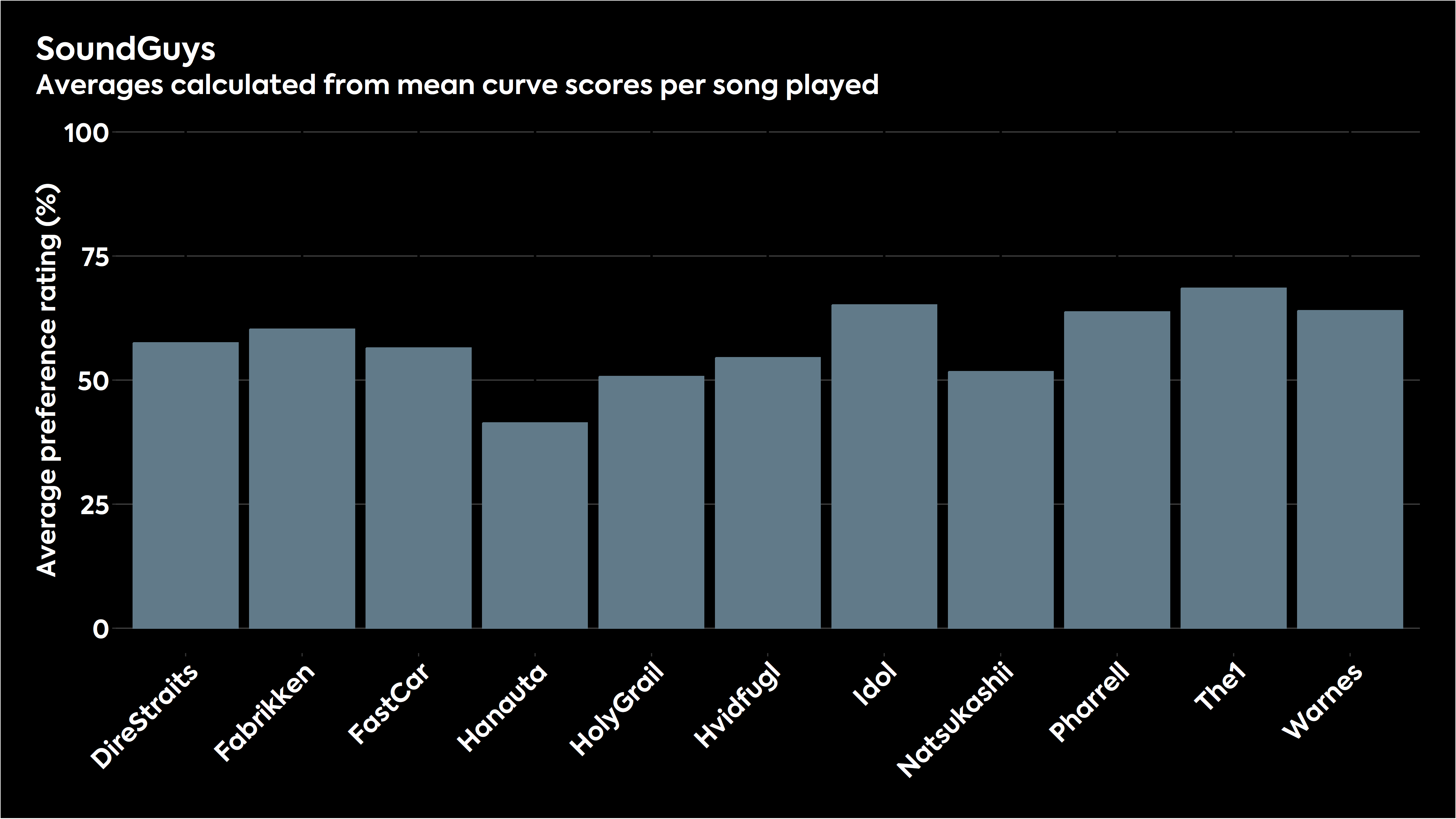
Additionally, just because one curve scored a certain way in this test does not mean that these findings will stay consistent among other groups, or studies. It’s entirely possible that more significant factors, listener classes, and features correlating to higher listener scores are discovered in subsequent investigations.
As previously mentioned, our commentary has not been included in this article. Stay tuned for our thoughts on the matter.
Thank you for being part of our community. Read our Comment Policy before posting.